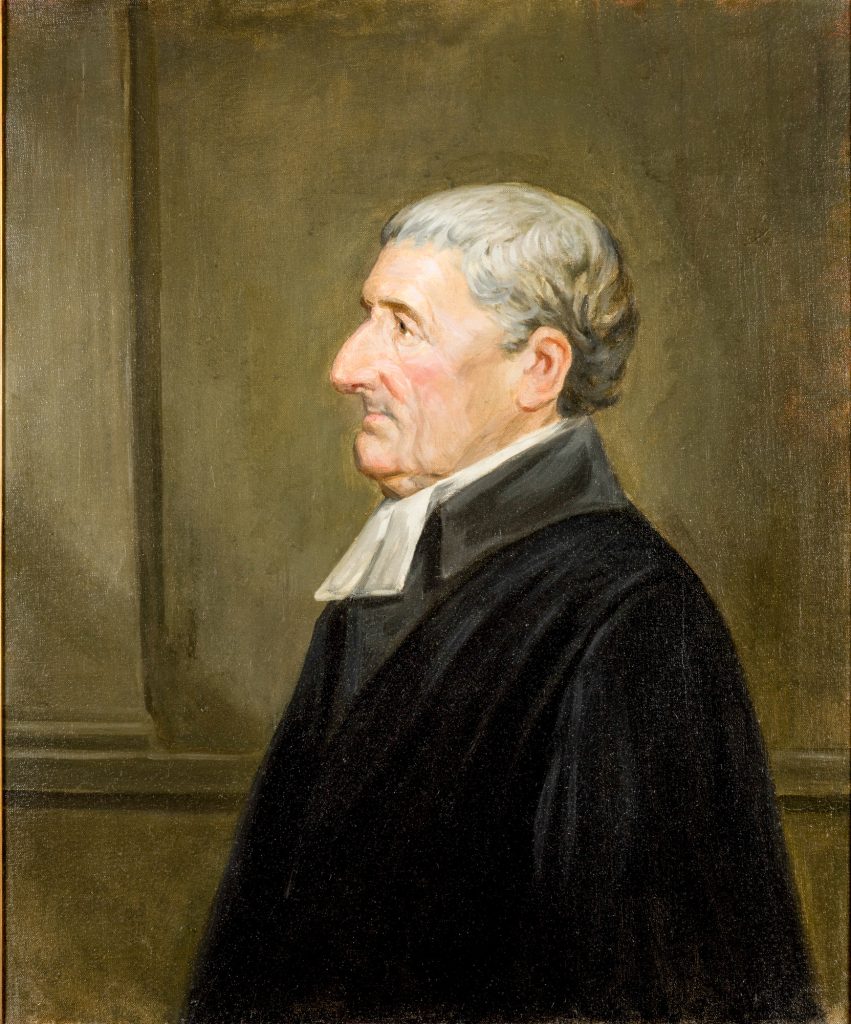Gershom Mendes Seixas, America’s first native-born Jewish clergyman, did not, in fact, bear the title rabbi, as is sometimes said. Indeed, America was not to have an ordained rabbi until 1840. Rather, it was as hazzan—cantor, but also a leader, preacher and communal representative—that Seixas served New York’s Congregation Shearith Israel for forty years.
Seixas was born out of the controversial marriage of an Ashkenazi woman and a Sephardic man. His father, Isaac Mendes Seixas, a struggling merchant who’d set out from London to the Caribbean, eventually reaching New York in 1738, was of an elite Sephardic lineage. His mother, Rachel Levy, belonged to a family of merchants, who as Germans, however successful, were in the eyes of America’s Sephardic majority socially inferior. “The Portugueze here where in a Violent Uproar abouth it,” is how the scene around the Seixas-Levy union was described by Abigail Franks, Rachel’s half sister. Gershom would certainly display the markings of this ‘mixed’ marriage—Yiddish words would dot his letters over the years, all the while serving as the hazzan of a Sephardic synagogue (admittedly New York’s only synagogue at the time.)
Seixas’ education was at a small Hebrew parochial school, lasting most likely no later than age thirteen. He probably also received some Talmudic instruction from his father but was otherwise self-taught in Jewish and secular literatures. He worked for several years as an apprentice to a craftsman until, at twenty-two, he was elected hazzan of Shearith Israel.
In 1775 he married Elkaleh Myers-Cohen. However, these proved difficult times. Three weeks after his first child was miscarried, Seixas and his wife made the choice to flee New York as the British were poised to occupy the city. They stayed in Stratford, Connecticut for several years. There, Elkaleh gave birth to their second child, Sarah Abigail, who some believe was her father’s favorite and who would marry future American Jewish leader, Israel Baer Kursheedt.
In 1780 they quit Stratford for the revolutionary capital, Philadelphia. Here Seixas presided over America’s second oldest congregation, Mikveh Israel. When the war ended, and displaced New Yorkers began to return, it was not without a struggle that Mikveh Israel allowed Seixas to leave Philadelphia. But leave he did; New York was to be his home for the rest of his life. He was to have two more children with Elkaleh and ten with his second wife, Hannah Manuel.
His duties as hazaan were by no means limited to leading prayers; he was responsible for education, circumcision and slaughtering, and served as the leader of New York’s small and tight-knit Jewish community. Seixas also functioned as a representative to the secular world. From 1784 to 1815, he served along side Alexander Hamilton and John Jay as a Regent of Columbia College, the first Jew to hold such a post.
Characteristic of Seixas’ service at Shearith Israel was his delivery of sermons, not something a hazzan had traditionally done. This was, no doubt, the influence of American Protestantism, as were the titles by which Seixas was most commonly known—minister or reverend. His sermons too, spoken in English, displayed the theological impact of Protestant thought as well as liberal Enlightenment ideals. Not to say that this was a conscious fusion; Seixas was echoing a process, or series of processes, well under way. Spanish, the communal language of Sephardic communities for centuries, was giving way to English as Ashkenazi Jews began to outnumber Sephardi, and as American Jews developed a greater feeling of comfort in this new country. And therein lies the ultimate significance of Seixas’ mixed lineage, indeed of his tenure at Shearith Israel: the emergence of distinct forms of American Judaism.
